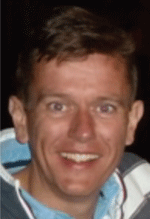Technical safety: use of concept risk assessment for field development certainty
Colin Crowley A C and Dave Ashton BA SNC-Lavalin Atkins, Oil & Gas, Asia Pacific, 50 St Georges Terrace, Perth, WA 6000, Australia.
B SNC-Lavalin Atkins, Oil & Gas, United Kingdom, 200 Broomielaw, Glasgow, G61 1NE, UK.
C Corresponding author. Email: Colin.Crowley@atkinsglobal.com
The APPEA Journal 59(2) 549-553 https://doi.org/10.1071/AJ18036
Accepted: 7 March 2019 Published: 17 June 2019
Abstract
As technology advances and field development possibilities grow, the need for earlier guidance on the safety performance of concept designs is greater than ever. The SNC-Lavalin concept risk assessment (CRA) tool is a transparent and rapidly deployable model that is based on sound, industry-accepted quantitative risk assessment (QRA) principles. From the earliest stages of field development, when conceptualisation may be vague and data sparse, a wide range and variety of design options can still be assessed effectively and ranked on their safety performance. The CRA tool is proprietary software initially developed with BP and Shell. The model was first calibrated against 10 detailed QRAs, but is regularly benchmarked and updated with the most current failure rate data and has been used on nearly 50 projects globally. The database now incorporates established rule sets from hundreds of detailed QRAs performed, including floating liquefied natural gas and floating storage regasification units. This paper presents a CRA case study for a generic remote offshore field with a range of development options from conventional to minimal offshore facilities. The model calculates the associated risks for the options considered and is presented in terms of individual risk per annum, temporary refuge impairment frequency and potential loss of life. The results highlight the effects of each individual design feature on risk levels by comparison of similar options side by side, noting the main risk contributors and allowing investigation of the benefits of risk reduction measures. This enables identification of the best design features from each of the options and allows an optimised design to be carried forward.
Keywords: quantitative risk assessment.

Colin Crowley is the Head of the Technical Safety Discipline for SNC-Lavalin Atkins Oil and Gas business in the Asia–Pacific. Colin has 19 years’ experience in the oil and gas industry providing overall technical safety support. Graduating with a Bachelor of Mechanical Engineering from the University of Western Australia in 1998, Colin has worked on both onshore and offshore projects ranging from concept through to detailed design throughout Australia, Asia, Africa and Europe. His projects include manned platforms, FPSOs, semisubmersibles, WHPs, MODUs, subsea tiebacks and onshore facilities producing oil, gas and LNG. In these projects Colin has held a variety of roles with both contractors and operators. His specialist expertise includes: the management and analysis of technical risk using formal safety assessments; implementation of ALARP engineering solutions; HAZID and ALARP workshop facilitation; safety case and performance standard development; and loss prevention engineering including hazardous area classification, F&G detectors, and firewater design. |

Dave Ashton is a highly experienced risk analyst, HAZID/HAZOP chairman and project safety engineer who has been involved with all aspects of the upstream and downstream oil and gas industries. Dave joined the Atkins business, a member of the SNC-Lavalin group, in 1993 and is currently the technical authority for the offshore technical safety teams analysing fires, explosions, ship collision and dropped objects from offshore installations. Recently, FLNG has dominated workload, with involvement on 13 projects. He has particular expertise in concept risk assessment and environmental assessment techniques and has played a key role in the development of various risk assessment methodologies for SNC-Lavalin. With in-depth knowledge of floating production, storage and offloading safety issues, Dave has been at the forefront of applying existing and novel techniques of risk analysis to the unique risks associated within liquefied petroleum gas and LNG offshore operations. |
References
Crawley, F. K., and Grant, M. M. (1997). Concept risk assessment of offshore hydrocarbon production installations. Process Safety and Environmental Protection 75, 157–163.| Concept risk assessment of offshore hydrocarbon production installations.Crossref | GoogleScholarGoogle Scholar |


